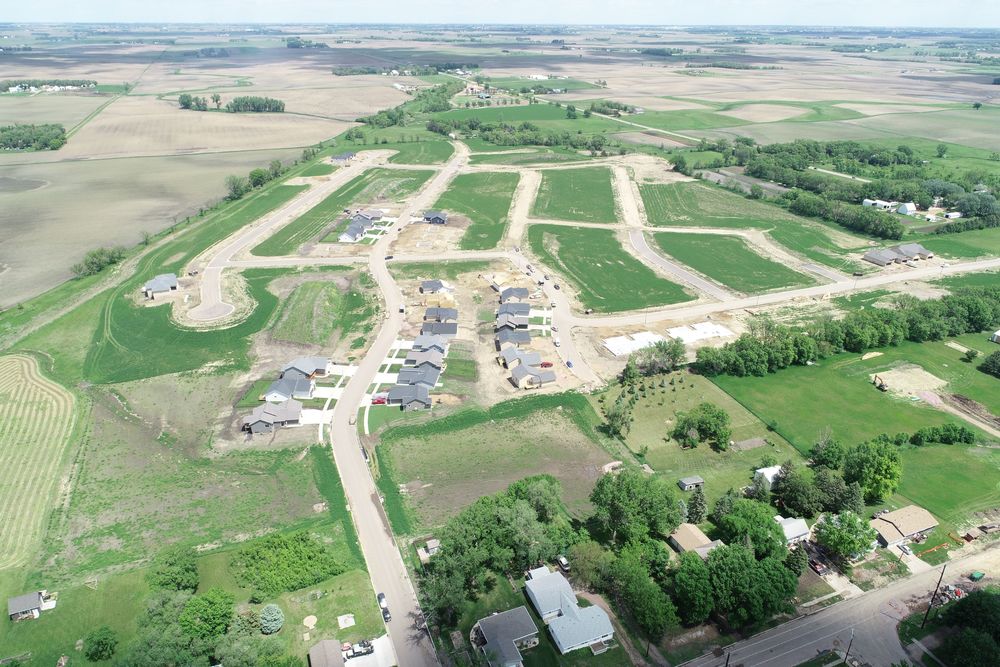The City of Lennox recently completed a comprehensive housing study to assess the community’s current housing stock, identify future needs, and develop strategies to ensure Lennox remains a vibrant and attractive place to live. The study, which projects housing demand through the year 2033, underscores both challenges and opportunities for the city as it continues to grow.
The study determined that by 2033, Lennox will need 156 new multi-family housing units and 267 new owner-occupied units to accommodate population growth and demographic changes. This demand reflects a combination of factors, including regional economic development, Lennox’s proximity to Sioux Falls, and the community’s reputation as a family-friendly small town with strong schools and amenities.
Multi-family housing will be especially important in providing options for young professionals, small households, and retirees who may be seeking affordable, low-maintenance living. At the same time, owner-occupied housing—ranging from single-family homes to townhomes—will continue to be the foundation of Lennox’s housing market, offering stability and long-term investment opportunities for families who choose to put down roots in the community.
These numbers represent more than just units; they reflect a vision of how Lennox can meet the housing needs of a growing and diverse population. Not long ago, a person shopping for a home in Lennox would find only a few options. With recent development, more housing opportunities and choices are available. Providing housing choices across income levels, life stages, and household sizes will ensure that Lennox remains accessible and appealing to both current residents and newcomers.
As Lennox grows, residents and city leaders alike have expressed a strong desire to preserve the community’s small-town character. The study emphasizes that growth must be managed carefully, with thoughtful planning and proactive policies that protect the qualities residents value most: safe and walkable neighborhoods, strong community connections, and a pace of life that balances convenience with neighborliness.
One key recommendation is to continue proactive code enforcement. Maintaining property standards not only protects the health and safety of residents but also helps preserve property values and neighborhood appeal. When code enforcement is consistent and fair, it reinforces a sense of pride in the community and ensures that new growth complements existing neighborhoods.
This approach to managed growth means prioritizing quality over quantity. Rather than focusing solely on the number of new units built, Lennox has the opportunity to guide development in a way that enhances its identity as a welcoming, small-town community with modern amenities.
The study also highlighted the role of mobile homes in Lennox’s housing landscape. While mobile homes provide an important source of affordable housing, they can also present challenges when it comes to compliance with building codes, maintenance, and infrastructure needs. The recommendation is for Lennox to create a collaborative remediation process for mobile homes that balances the need for compliance with the goal of maintaining affordability. This process would involve working directly with residents and property owners to address code issues, improve safety and livability, and explore opportunities for rehabilitation rather than displacement.
By taking a collaborative approach, the city can avoid heavy-handed enforcement that risks displacing residents who may have limited housing options. Instead, Lennox can build partnerships with property owners, social service agencies, and community organizations to support residents in maintaining safe and affordable homes. This balanced strategy ensures that mobile homes remain a viable part of the housing mix while meeting community standards.
Another central finding of the study is that housing growth must be accompanied by investments in community amenities. As new residents move in, expectations for parks, trails, cultural amenities, and public services will grow. Without these investments, housing development alone may not be enough to attract and retain families and young professionals. Community amenities are not just “extras”—they are integral to quality of life. Parks and green spaces provide opportunities for recreation and relaxation. Trails and sidewalks support healthy lifestyles and safe mobility. Public gathering spaces strengthen community bonds. Amenities like libraries, schools, and cultural facilities enhance learning and creativity.
The study stresses that amenities must grow alongside housing to maintain balance. For example, if new housing is added without expanding park space, existing facilities may become overcrowded, diminishing the community’s quality of life. On the other hand, well-planned amenities can serve as a draw, encouraging new residents to choose Lennox over other communities. Investing in amenities is also consistent with the city’s goal of preserving small-town character. By creating spaces where people can connect, celebrate, and relax, Lennox reinforces the sense of community that makes it unique.
In whole, the study’s findings create a roadmap for Lennox’s housing future. By 2033, the community will need to provide hundreds of new housing units, balance the needs of affordability and compliance, and invest in the amenities that make Lennox a great place to live. The study does not recommend unchecked growth, but rather intentional, managed development. Lennox can embrace change while holding on to the values that define it. Strategic land use planning, proactive partnerships with developers, and ongoing engagement with residents will be critical in ensuring that growth is sustainable and aligned with community goals.
The success of Lennox’s housing strategy will depend on collaboration. City government will play a central role in setting policies, updating zoning codes, and investing in infrastructure. Developers will be essential partners in building new housing that meets diverse needs. Residents will also play a crucial role, both in shaping the vision for the community and in welcoming new neighbors.
Housing is about more than bricks and mortar—it is about people. The study reminds the community that every new unit represents a household looking for a place to belong. By planning ahead, Lennox can ensure that these households find not just a house, but a home in a thriving, supportive community.

